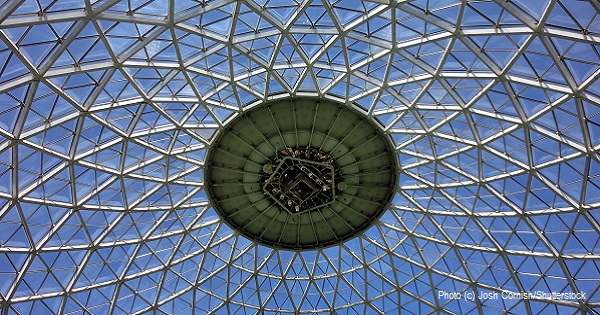|

Biomimicry:
Seeking Nature-Inspired Solutions to Climate Change
By Wendy Priesnitz
Nature can be a great teacher. If we study and then emulate its principles, practices, and elements, we can create sustainable solutions to the various challenges of everyday life. This emulation is called “biomimicry.” The term comes from the Greek words bios, meaning life, and mimesis, meaning to imitate.
An early example of biomimicry (although it wasn’t called that at the time) is the study of birds to enable human flight. Although never successful in creating a “flying machine,” Leonardo da Vinci was a keen observer of the anatomy and flight of birds, and made numerous notes and sketches on his observations as well as sketches of various “flying machines.” Likewise, the Wright Brothers, who finally did succeed in creating the first airplane in 1903, apparently gained inspiration for their airplane from observations of pigeons in flight.
Modern biomimicry research has inspired adhesive glue from mussels, solar cells made like leaves, fabric that emulates shark skin, pigment-free color inspired by butterflies, and a process that harvests water from fog like a beetle. The fastening marvel called Velcro® inspired by the tiny hooks found on the surface of burs, carbon-sequestering cement inspired by corals, roofs that shed water during monsoon season and also store water for use in the drought season – just like trees do in that environment – and energy efficient wind turbines inspired by schooling fish are other examples of biomimicry being used to create better products in the modern world.
Biomimicry and Climate Change
Biomimicry has great promise for helping us combat or at least adjust to climate change. And that is because Nature creates habitats where each organism is adapted to its place and its conditions. As habitat conditions change, organisms are continuously developing and changing in synch in order to survive.
The Biomimicry Institute, in partnership with the Ray C. Anderson Foundation, holds a design challenge every year inviting participants to address critical global issues with Nature-inspired solutions. This year the challenge is to create a product, service, or system that combats climate change.
The Biomimicry Global Design Challenge is a team competition. There are two categories: a student-only category (high school and university) and an open category, which any team can enter (including students). Participants use the online Biomimicry Spiral and Toolbox to research and design a solution using biomimicry. Category winners will be awarded cash prizes. Open category winners will also be invited to participate in the Foundation’s Biomimicry Accelerator and compete for the $100,00 Ray of Hope Prize™.
That prize and the Foundation are inspired by and named for Ray Anderson, the founder and chairman of Interface, Inc., who died in 2011. He is known for dedicating the second half of his career leading a highly successful commercial broadloom company to proving that sustainability was not just the right thing to do, it was the smart thing to do for business. The Ray C. Anderson Foundation is a U.S-based, not-for-profit 501(c)3 organization whose mission is to promote and advance the concepts of sustainable production and consumption.
Climate change is, arguably, the most important problem of our time. Channeling the powers of biomimicry to solve it gives me great hope. As Janine Benyus, author, biologist, and biomimicry popularizer, has said, “The more our world functions like the natural world, the more likely we are to endure on this home that is ours, but not ours alone.”
Wendy Priesnitz is Natural Life Magazine's editor. She has been a writer and journalist for 40 years and has authored thirteen books.
|

